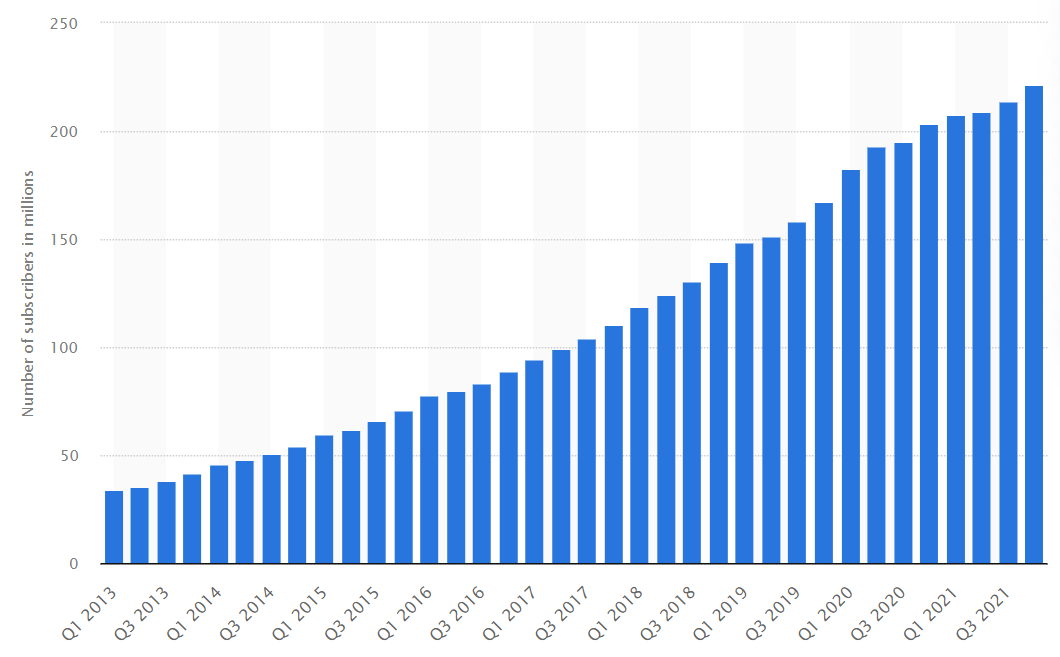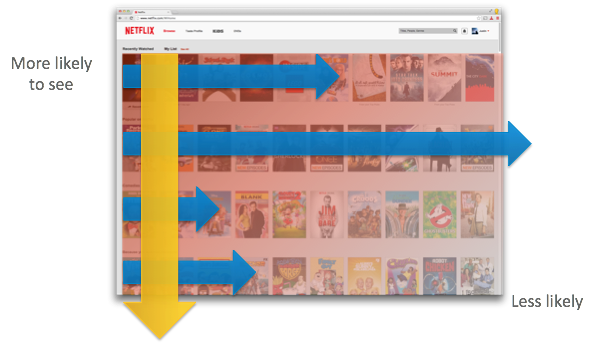With over 220 million subscribers, Netflix is one of the most popular streaming platforms featuring hundreds of movies, animations, and TV shows. What’s the secret behind their success? Netflix users value this platform for a wide offer, high-quality subtitles, and, yes, accurate, personalized recommendations. Netflix exploits an advanced machine-learning-based recommendation system that analyzes users’ choices to suggest them new movies and TV shows. In this article, we are going to take a closer look at their recommendation engine and see what lessons other businesses can draw from their system.
Netflix began back in 1997 as a movie rental service that allowed customers to order movies and receive them via snail mail. In 2000, Netflix started using data science and analytics tools to recommend videos for users to rent1. In 2006 Netflix organized a $1 million challenge to improve their recommendations2. Although the solutions turned out to be too difficult to implement in practice, this challenge sparked huge innovations in the area of smart product recommendations. For example, it was demonstrated for the first time that a matrix factorization is a viable approach to recommendations3.
Their approach was successful and now, they are a leading video streaming platform.
Did you know that about 80%4 of what people watch on Netflix comes from their recommendation algorithms? That’s the best proof of their efficiency. Plus, Netflix dynamically gets more and more users5 (almost 222 million subscribers as of Q4 2021), which also shows that they are doing a great job understanding peoples’ needs concerning entertainment.

And since the Netflix recommendation system is their secret weapon, it’s definitely work taking a closer look at it.
What is the Netflix recommendation system?
In essence, it’s a set of algorithms using machine learning to analyze user data and movie ratings. To make it more effective, Netflix has set up 1,300 recommendation clusters based on users viewing preferences. As a result, whenever you turn on Netflix, you see a list of movies and TV shows tailored to your interests and user profile. The goal is to help each user find a movie or a TV show they will enjoy and do so as quickly as possible (estimations are they have just 90 seconds for that). The recommendation system itself remains in the back end and is invisible to the user.
How does their recommendation system work?
Netflix’s system shows personalized recommendations based on several factors, including6:
- Each user’s previous interactions (e.g., viewing history, searches, and ratings)
- Other members’ choices (especially those with similar tastes and preferences)
- Information about the specific title (genre, category, the year of release, etc.)
- The device used to watch videos on Netflix
- The watching time
Combined, all that data is a useful input for Netflix recommendation algorithms. They process and analyze all that data and use machine learning to turn it into useful and accurate movie recommendations. But let’s suppose that you’ve never used this platform. What does it look like in the beginning?
When a user creates a new Netflix account, they have to choose several movie titles that they like. It’s a starting point for the recommendation algorithm to start working. As time goes by and you watch more movies and more TV shows, the recommendation system learns your habits and preferences. As a result, the suggestions that you get are becoming more and more accurate. Additionally, the recommender system used by Netflix focuses on each user’s most recent choices. So if a few years ago you were interested in fantasy movies, but now you mainly watch romance movies, the algorithm will suggest mostly such titles.
You have to know that Netflix does so much more than just provide you with personalized recommendations. In fact, everything you see on the homepage is tailored towards your preferences. Their recommendation system ranks titles in a way that is designed to present them in the best possible order. This means that:
- There are several rows of suggestions containing different titles for you to watch
- Each title is ranked within the row
- Each thumbnail is also tailored to a specific user (sometimes, when you log into the system, you see how these thumbnails instantly change; now you know why)
TWO-TIERED RANKING SYSTEM
Netflix uses an effective two-tiered approach to movie recommendations. Here’s how it works:

It’s all optimized so that the user would benefit from straightforward navigation and most probable movie suggestions. Of course, there can be millions of ways of presenting content this way. That’s one of the challenges they have to address every day. As we can read on Netflix TechBlog7:
“To algorithmically create a good personalized homepage means assembling one page per member profile and device from thousands of videos that may be relevant for a member and from easily tens of thousands of potential rows, each with a variable number of videos.”
What algorithms does Netflix use?
The Netflix recommendation system is actually very complex, and it uses various technologies and machine learning models to provide millions of users with accurate suggestions. There are several algorithmic approaches in place, and they comprise8:
- Reinforcement learning (RL algorithms don’t need any information in advance; they learn from data during the process)
- Neural networks (they try to imitate the way the human cortex works; neural networks are extremely important in deep learning)
- Causal modelling (it’s an analytical technique concentrated on the cause-and-effect relationships)
- Probabilistic graphical models (PGM expresses the conditional dependence structure between random variables)
- Matrix factorization (it’s a class of collaborative filtering algorithms used specifically in recommendation systems)
- Ensemble learning (a technique using multiple learning algorithms to achieve better results)
As you can see, the Netflix recommendation system is far more complex than it would seem to an average user! Moreover, the vital part of their recommender system relies on A/B testing. They constantly test various options concerning movie suggestions, thumbnails, and how titles are organized to determine what triggers the biggest interest and engagement. For instance, in case of a viewer who likes romantic movies, the artwork personalization can mean that such a person will see a thumbnail presenting a romantic aspect of the movie. You can read more about that on Netflix blog.
The lesson for you
Today, Netflix has huge amount of users and interactions. This means that they can rely on simpler methods that scale well with those numbers. Of course, Netflix’s system is not perfect. But they tirelessly work on developing and improving their product suggestions. That’s why, at least partly, why people adore this platform. You should go the same way. If your business could use a recommendation system, don’t neglect that part of the business. Start with a well-thought-out strategy and gather as much data about your customers as possible. Next, use all that information to devise a tailor-made system. There is no copy-paste in recommendation systems; everything should be adjusted to the needs of the given business. And that’s why you need a professional AI partner.
Work with RecoAI
If you want to benefit from a recommendation system in your company, drop us a line! We’ve been operating in this niche for some time now and with great success. Our team has won several competitions on Kaggle (their challenges constitute a true milestone in the development of such systems). Additionally, we won the 2019 RecSys competition.
At RecoAI, we specialize in intelligent recommender systems fueled by AI and machine learning. We will gladly help you get the most of the data that your company processes to reach users more effectively.
1. https://medium.com/@springboard_ind/how-netflixs-recommendation-engine-works-bd1ee381bf81
2. https://en.wikipedia.org/wiki/Netflix_Prize
3. https://datajobs.com/data-science-repo/Recommender-Systems-[Netflix].pdf
4. https://www.youtube.com/watch?v=f8OK1HBEgn0
5. https://www.statista.com/statistics/250934/quarterly-number-of-netflix-streaming-subscribers-worldwide/
6. https://help.netflix.com/en/node/100639/us
7. https://netflixtechblog.com/learning-a-personalized-homepage-aa8ec670359a
8. https://medium.com/@springboard_ind/how-netflixs-recommendation-engine-works-bd1ee381bf81
